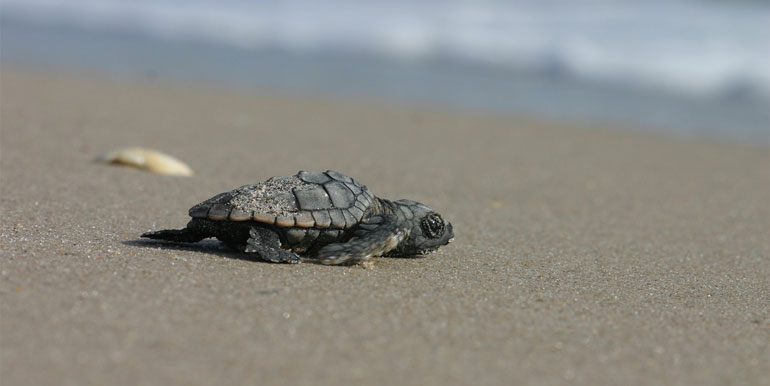Pedregal de Cabo San Lucas’ Developer is aware of the delicate balance between the environment and human development, so we sat down to chat with Graciela Tiburcio Pintos about the importance of studying and conserving wildlife around us. Graciela was recently given the Environmental Merit Award by SEMARNAT for her 22 year career in research, conservation, management and the sustainable use of wildlife and coastal ecosystems with an emphasis on sea turtles, and her legacy of biodiversity conservation and sustainable coastal community development in Mexico. She explains, “It is impossible to think that human development does not affect the environment, but if we operate and apply sustainable development we will be on track to achieve a certain level of material progress without compromising the environment, natural resources, or human quality of life or that of other species on the planet. In this sense, sustainable development poses a balance between social welfare and responsible use of natural resources, in this way reconciling the three fundamental pillars of sustainability — the economic, the ecological and the social.”
The case of the sea turtles that come ashore to breed in Baja California Sur are an example of this. Although turtles are present all year round, they make their nests and lay their eggs from August to November in the southern state. After 45 to 60 days, turtles are born with the instinct to return to the sea. Only 1 in 1,000 hatchlings reach adulthood.
We must consider that sea turtles are a part of the sea life cycle and are important components of marine ecosystems. They significantly alter the habitat where they grow, and take a leading role in the transportation of food from the marine ecosystems to coastal areas. Each species has an important ecological function, contributing to the health of coral reefs, sea grass beds, estuaries and sandy beaches. Also, they are important predators in food chains in the open ocean and in coastal areas, playing an important role as drivers of jellyfish populations, coral, sea grasses, etc.
A decline in sea turtle population could bring serious economic impacts to the hotel and fishery industries. The thousands of babies born are an important food source for industrial and sport fishing. Their disappearance would be reflected in the marine population of the area and have a significant impact on the local economy.
“99% of a sea turtle´s life takes place in the sea. We have a vague idea of where they go and how they feed, so it is important to better know their behavior in the ocean: with more support and resources, we can do strategic planning for their conservation, thereby generating a greater impact on the conservation of a species and its ecosystem for our economic and social well-being.”
It has been said that something as small as the flutter of a butterfly’s wing can ultimately cause a typhoon halfway around the world – Chaos theory. It is the sum of little things that lead to changes, and this theory can easily be applied to the idea that whatever we do today will reflect in our future. With this in mind, Pedregal de Cabo San Lucas’ Developer has decided to contribute to the efforts of the Organization for Sustainability and Environmental Conservation, AC (SyCOMA Organization) for studying and conserving sea turtles with technology that will allow tracking satellites to monitor the life of an adult turtle. The data obtained from this information will serve to deepen the knowledge of this species and to help establish standards and objectives that promote conservation and the environment around them
If you would like to be part of this effort by participating and monitoring the path the turtle takes, email us at escapes@pedreagal.com. For more information on conservation programs visit: https://www.facebook.com/organizacionsycoma




Hola Hola :)!
Great Blog… great pictures.
We, the team at http://www.luxlifevacations.com, totally agree with you.
The launch of the baby turtles is one of the best things to do in Cabo.